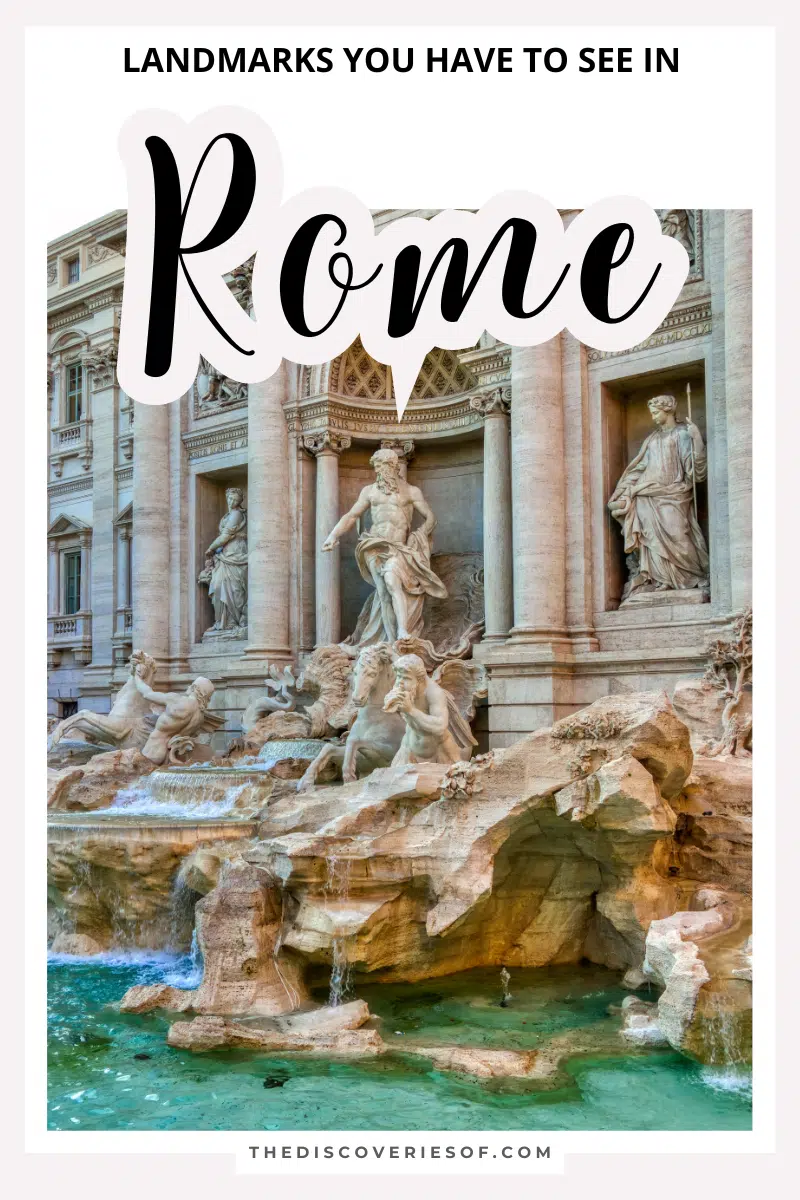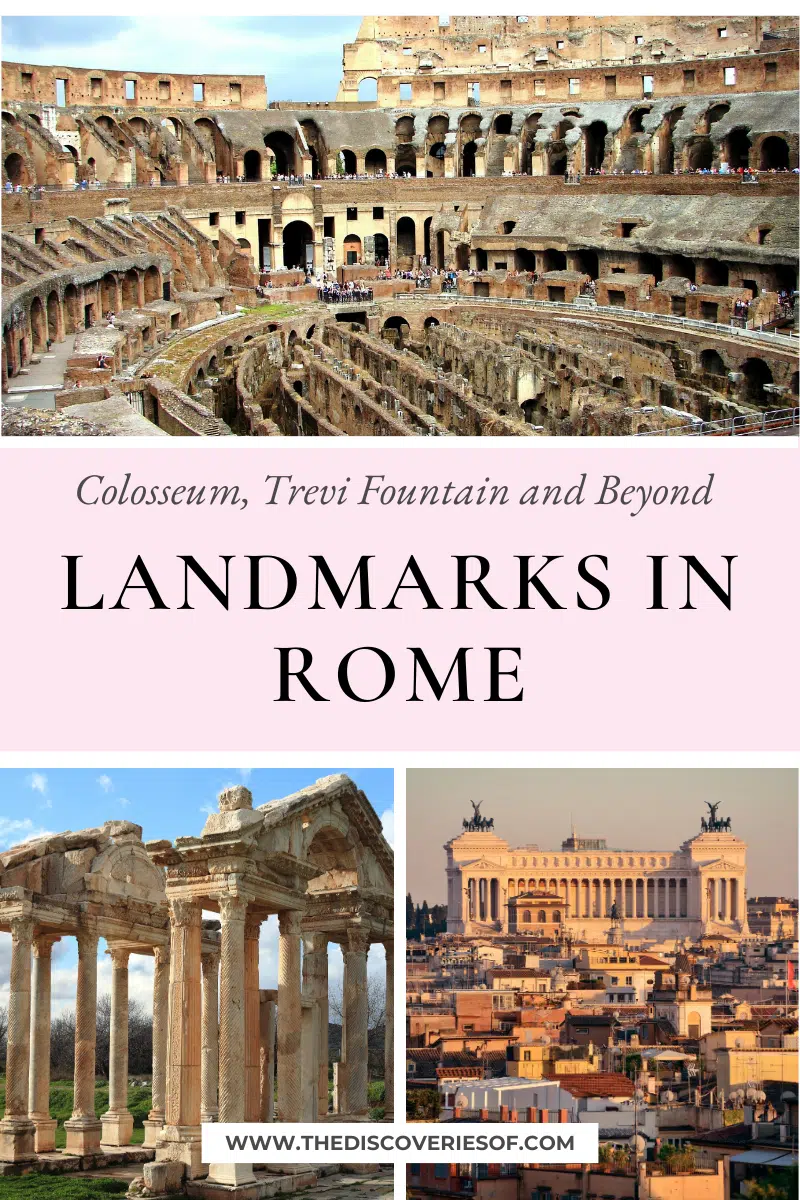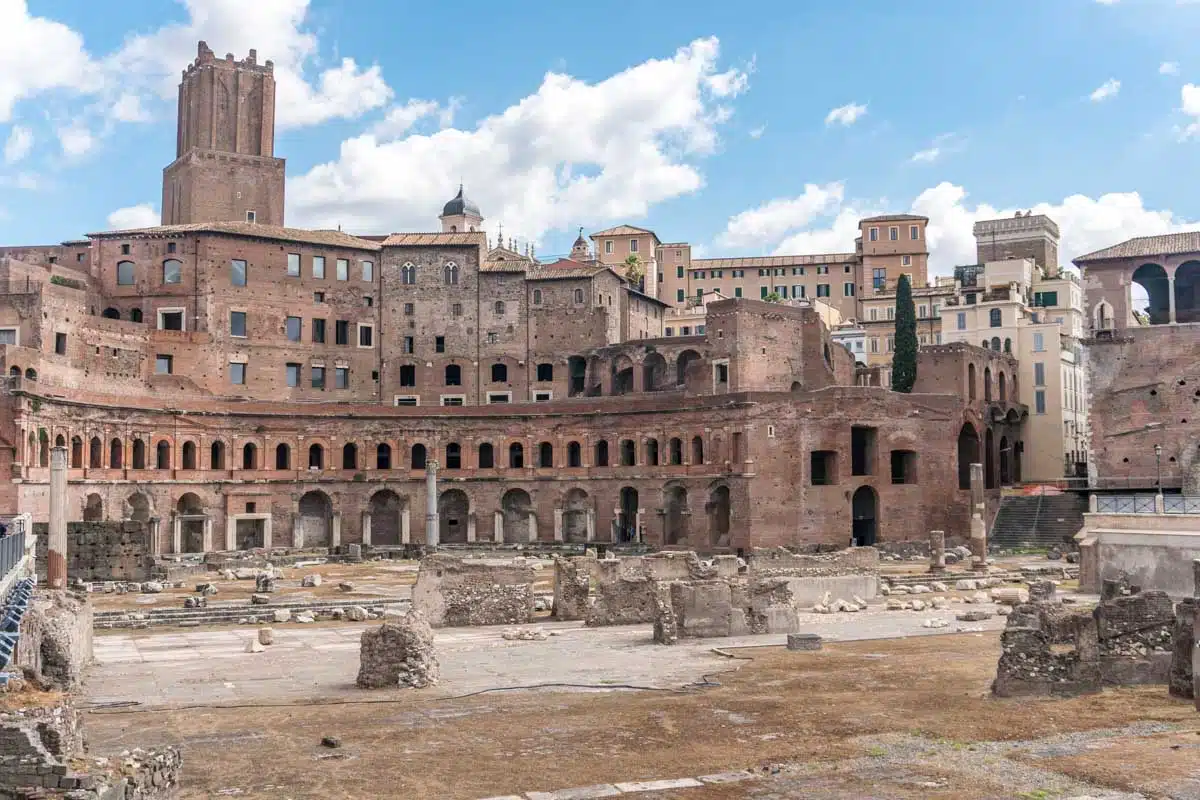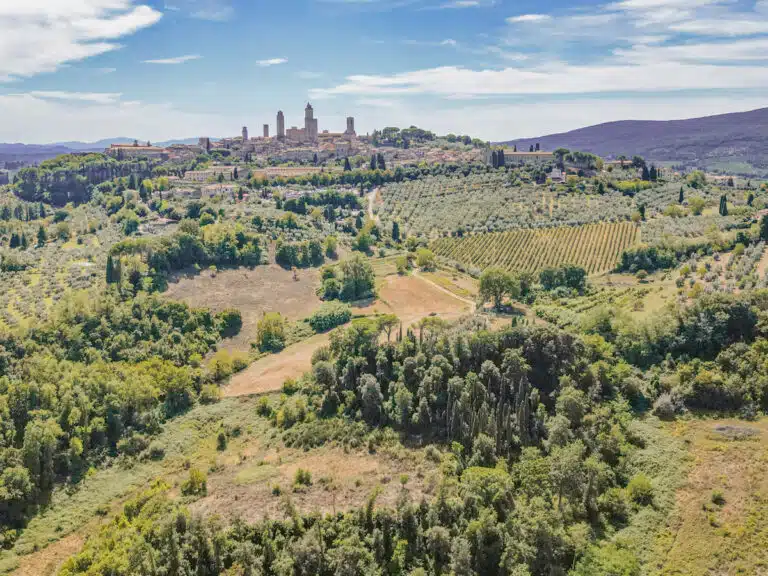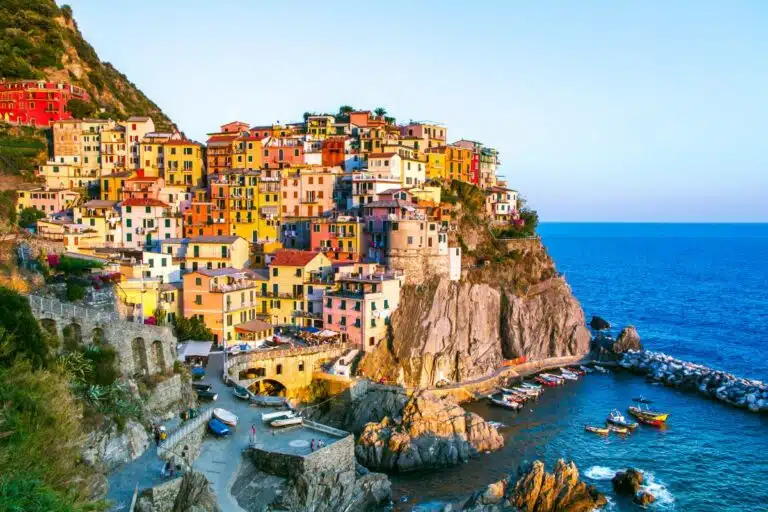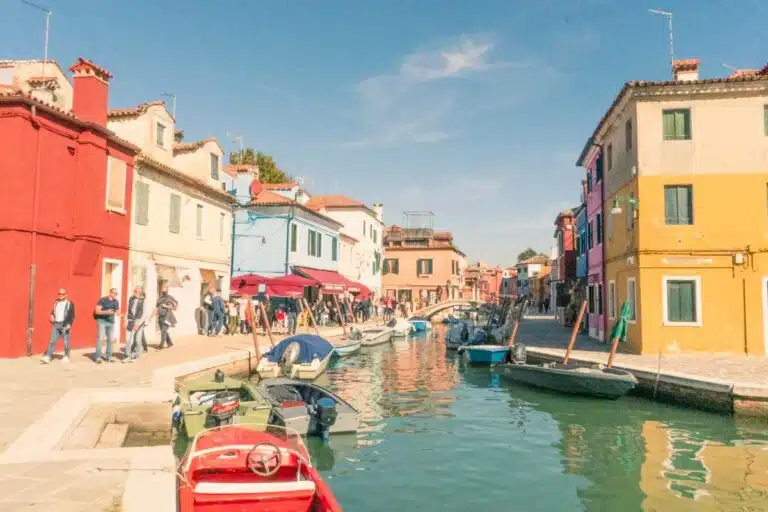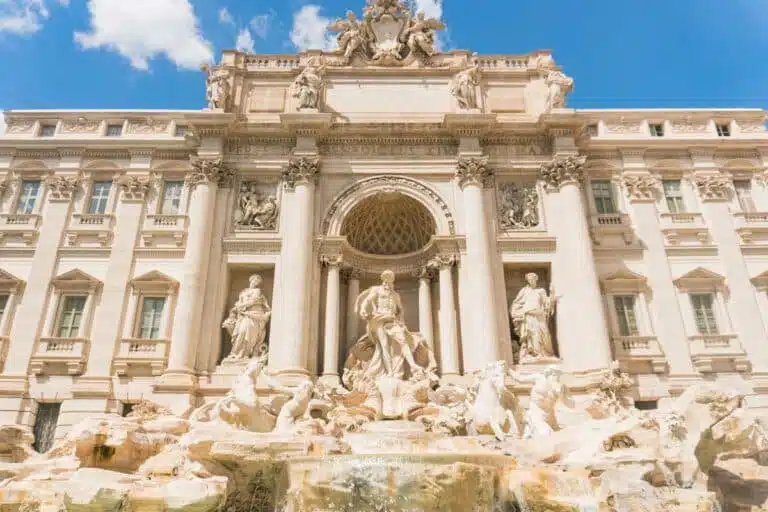Famous landmarks in Rome aren’t exactly hard to come by – you can’t travel far without tripping over historic ruins or a Renaissance masterpiece. Isn’t that one of the perks of visiting such an ancient city, after all?
It’s no overstatement to say that Rome is the city that’s packed landmarks.
So it would be a real, real shame if you took a trip and didn’t see as many of these spectacular attractions as possible.
Where else are you going to stuff your eyes with visions of the Colosseum IRL? Ditto The Forum and the Sistine Chapel. Yeah, exactly.
So buckle up and get ready to see which famous Rome landmarks you just can’t miss on your next trip to this historic destination. Just don’t forget to fill in the gaps with plenty of gelato stops and espresso refills!
Famous Landmarks in Rome
The Colosseum
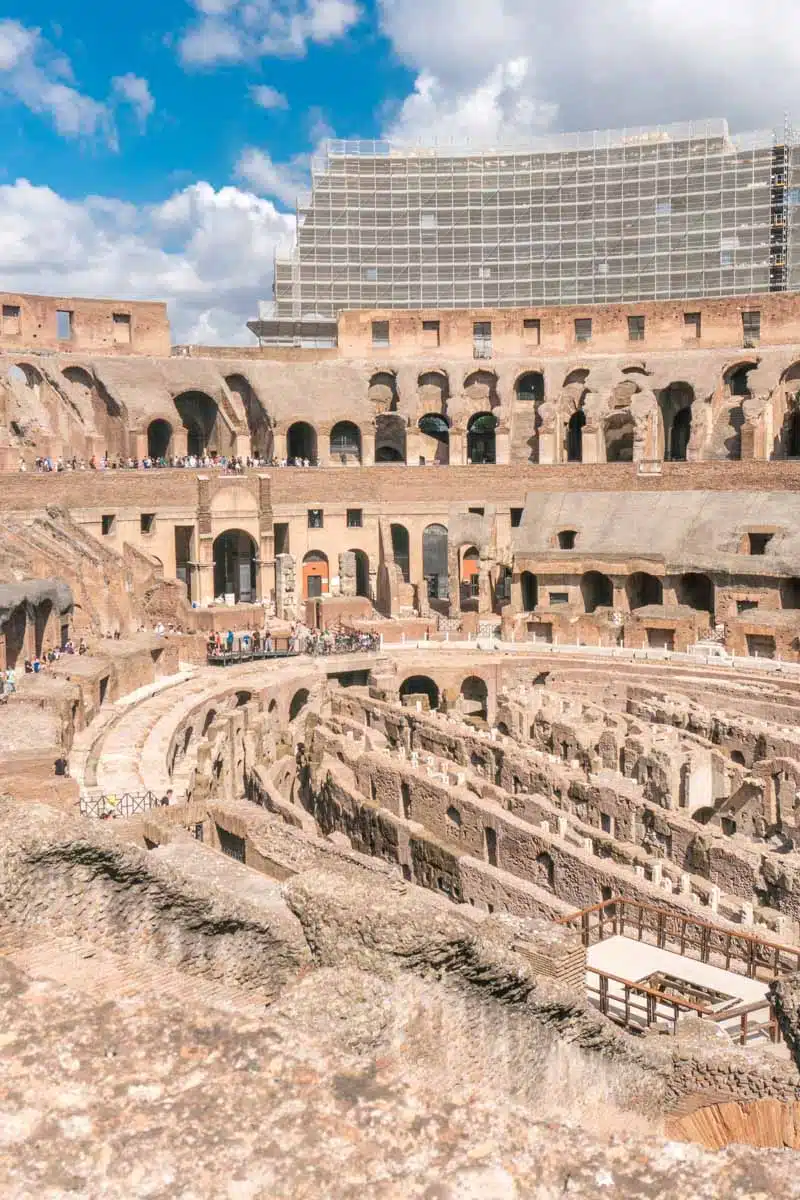
First up, the Colosseum – you can’t visit Rome and not admire this massive arena.
Also known as the Anfiteatro Flavio, this is where gladiators bled, simulated sea battles raged, chariots raced, and Caesar decided the fates of men with a twist of his wrist – oh, the drama!
Nearly 2000 years later and it’s still a mindblowing architectural achievement and the most prominent ancient arena in the world. The floor got removed in the 19th century to expose the tunnels where gladiators and animals stayed before the bloodsports started.
Go early to avoid the crowds so you can enjoy the arena unfettered by excess tourists.
Top Tip: Book This Combined Colosseum, Roman Forum and Palatine Hill Ticket
The Pantheon
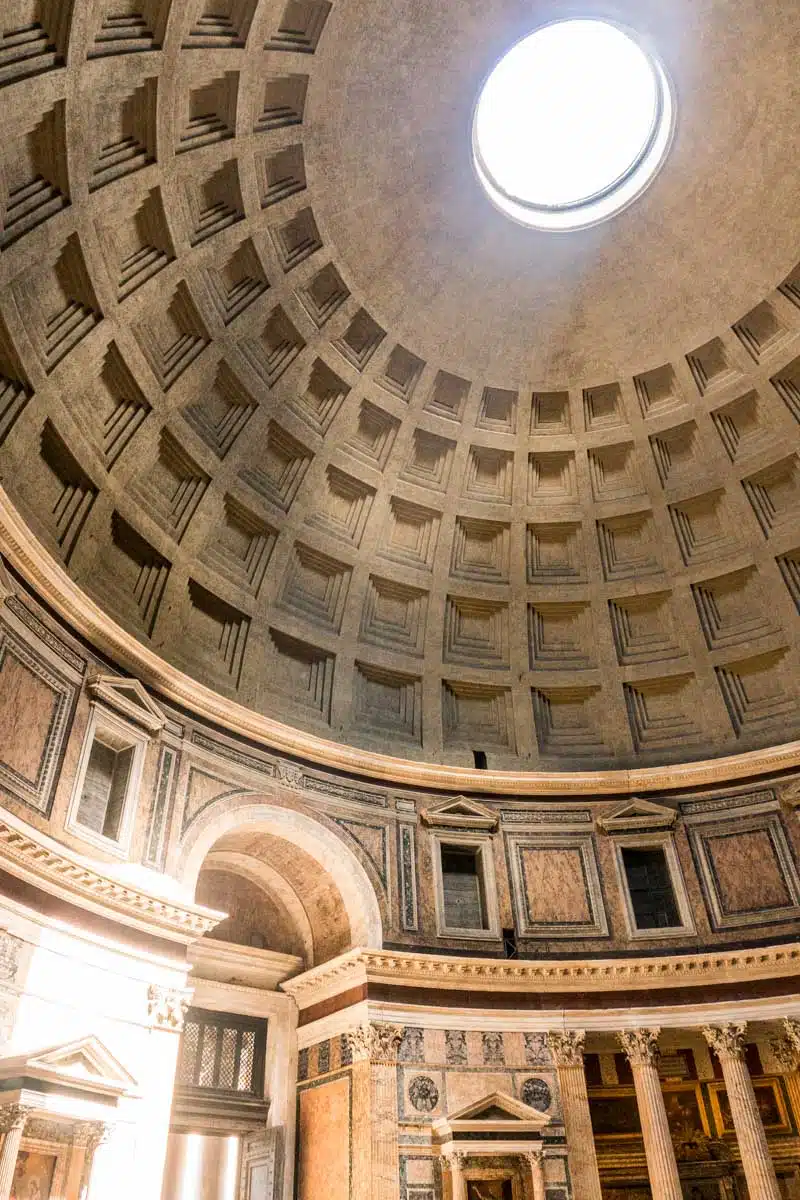
In Rome, landmarks are aplenty. If the Colosseum is the most iconic, the Panthéon has to be the second.
It began as a Roman temple with a façade designed in the ancient Greek style. The sixteen granite Corinthian columns on its portico are what draw the eye and give that sense of majesty.
Inside it’s all Italian Renaissance, though, with 15th-century frescos dotted across the walls. The dome that proudly crowns this glorious work of architectural art remains the largest in the world made of unreinforced concrete.
Several notable people are entombed here, including the painter Raphael and Queen Margherita of Savoy. I highly suggest you prioritise this landmark on your list of things to see in Rome.
Top Tip: Book This Guided Pantheon Tour
Trevi Fountain
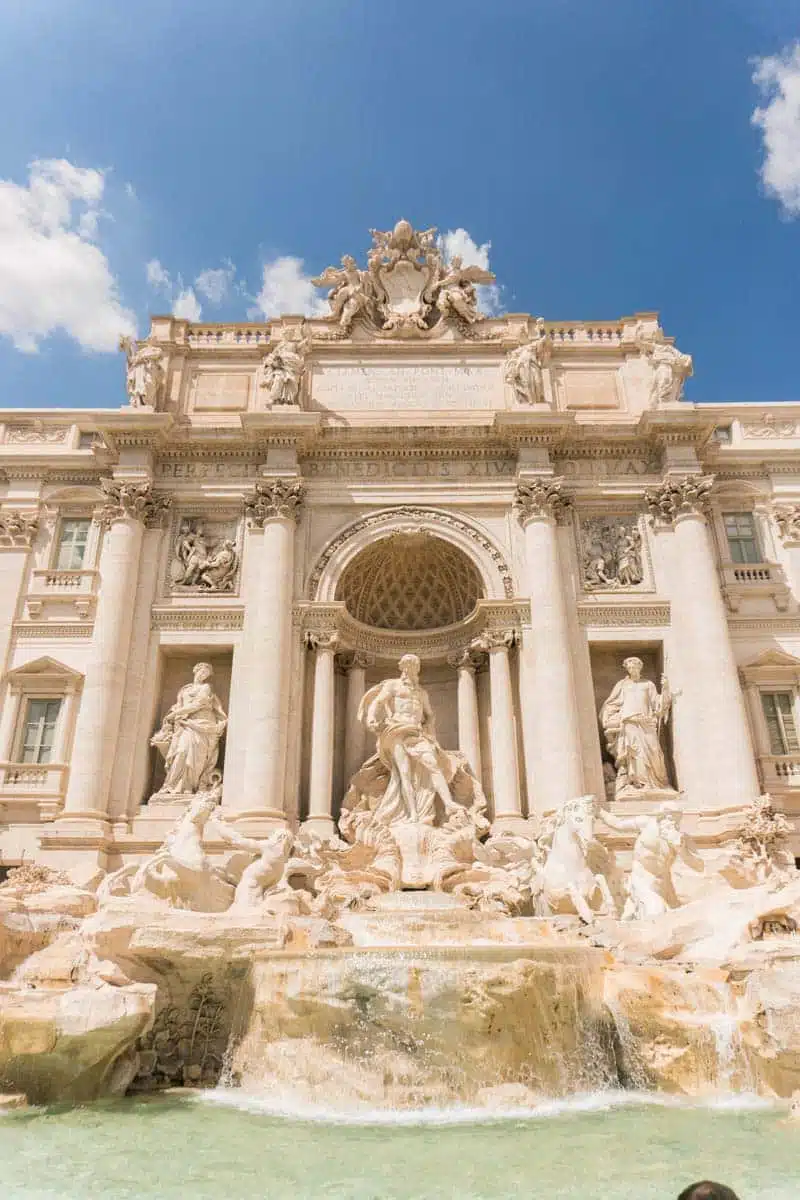
This 18th-century fountain designed by Nicola Salvi is one of the most beautiful in the world, whether by day or night. The sculptures boast a nautical theme with Oceanus, Abundance, and Salubrity accounted for with tritons and horses at their feet.
It’s the perfect spot to sit and enjoy a gelato to the accompaniment of the fountain’s bubbling waters.
There’s a myth about this magical fountain that if you toss in a coin, you’ll return to Rome. Throw in two, and you’ll fall in love with a good-looking Italian. BRB while I empty my entire purse.
No need to part with your euros, though — I’m sure you’ll return to Rome, with or without an Italian hottie.
The Roman Forum
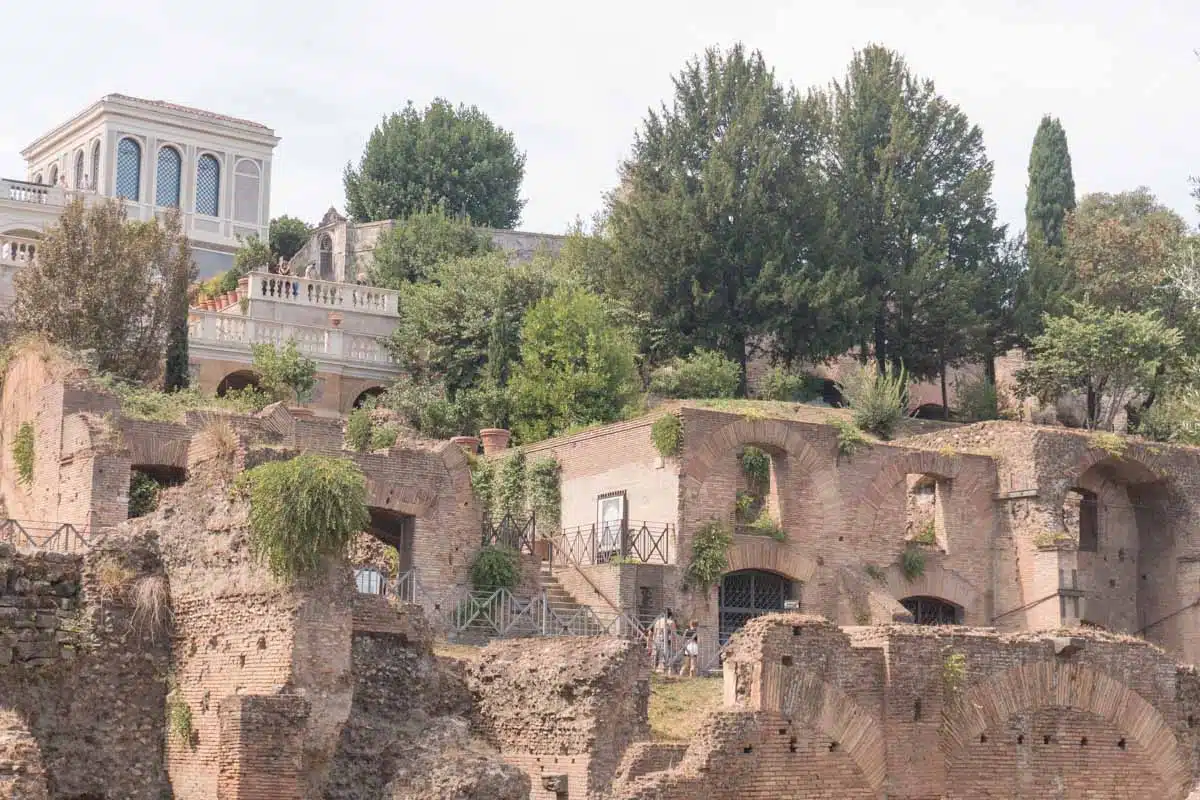
One of the more popular of Rome’s sights, the Forum was once the heart of the ancient city, where entertainment, justice, commerce, and public administration were daily experiences.
Taking a visit to this most famous of Roman landmarks allows you the chance to walk in the steps of Cicero, Caesar, and August, to name but a few. The crumby columns and buildings make for a fascinating step back in time, no matter how much (or how little) of a history buff you are.
A trip here can take several hours, so plan ahead and dress comfortably.
Top Tip: Book This Combined Colosseum, Roman Forum and Palatine Hill Ticket
St. Peter’s Basilica
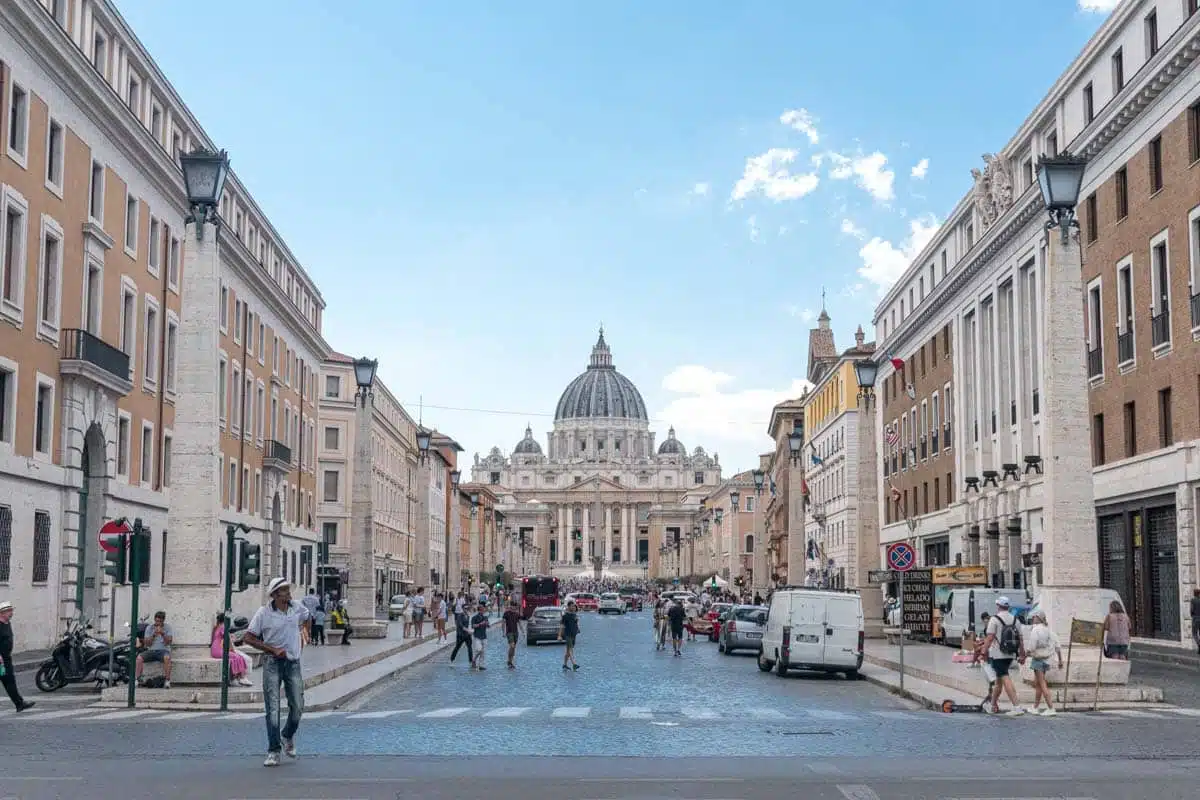
Located in Vatican City, St. Peter’s Basilica had several notable designers: Renaissance artists from Michelangelo to Gian Lorenzo Bernini, Donato Bramante, and more added their unique perspectives to this marvel of architecture.
This, the largest Catholic church in the world, houses multivarious works of art, including the famous La Pietá by Michelangelo, which you’ll encounter as you meander through the corridors. Also on display are the tombs of the Popes in the Vatican’s grottos, including the tomb of Saint Peter himself.
Even if you aren’t religious, it’s a moving experience, and art lovers will rejoice in the sheer volume of masterpieces at this most wondrous of Roman landmarks.
The Sistine Chapel
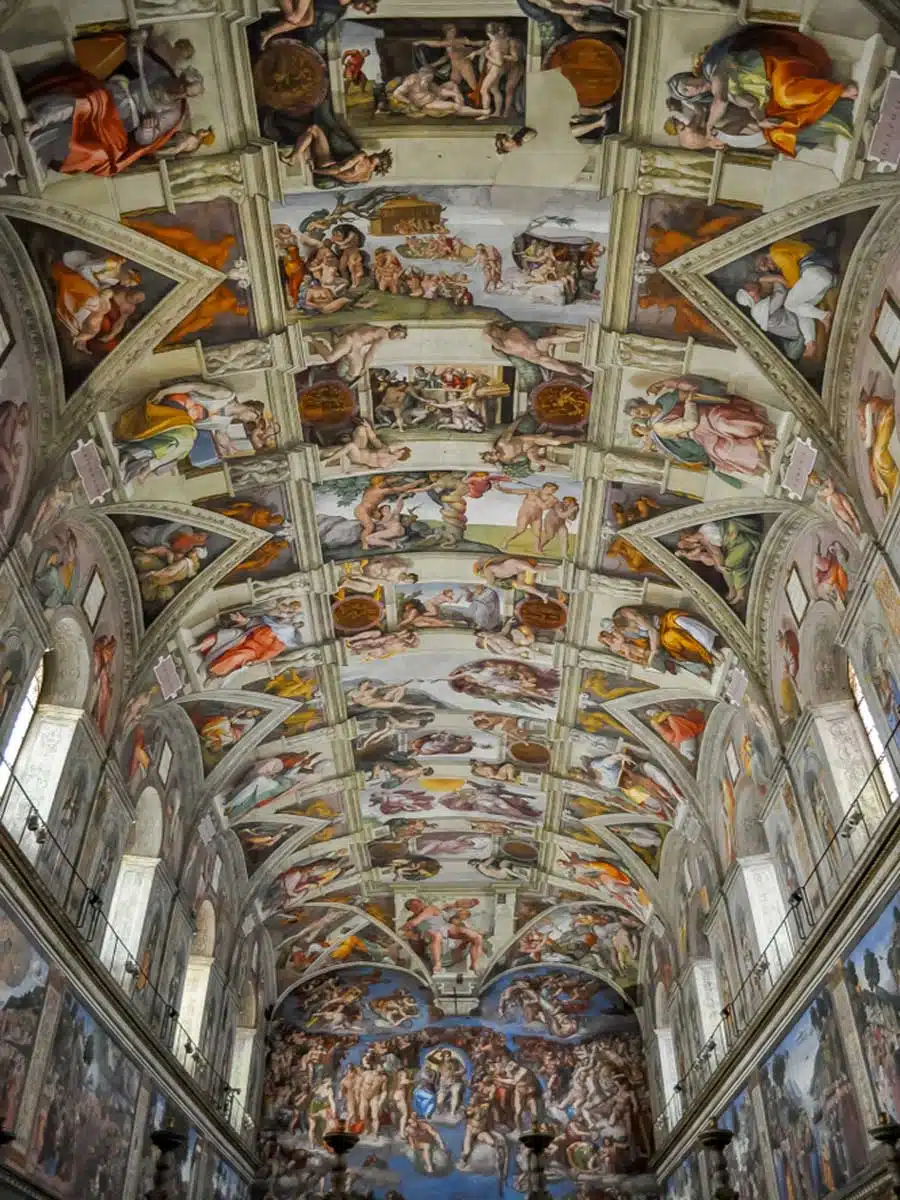
The Sistine Chapel is just one of those landmarks in Italy you can’t miss, art nerd or not. It’s one of Michelangelo’s ceiling masterpieces, so get ready for the sore neck you’ll get while gaping upwards as you walk through the 40-metre chapel.
The inside is so intricately and lovingly adorned with art that you won’t believe how austere the outside of the chapel appears. “The Creation of Man” is one of the most iconic examples of Renaissance art from the 16th century, so don’t speed past it.
Just be respectful or face the wrath of the guards who love to bound over to anyone with a phone out. It’s strictly no photos allowed.
Top Tip: Book Your Vatican (+ Sistine Chapel) Tickets in Advance
Piazza di Spagna and the Spanish Steps
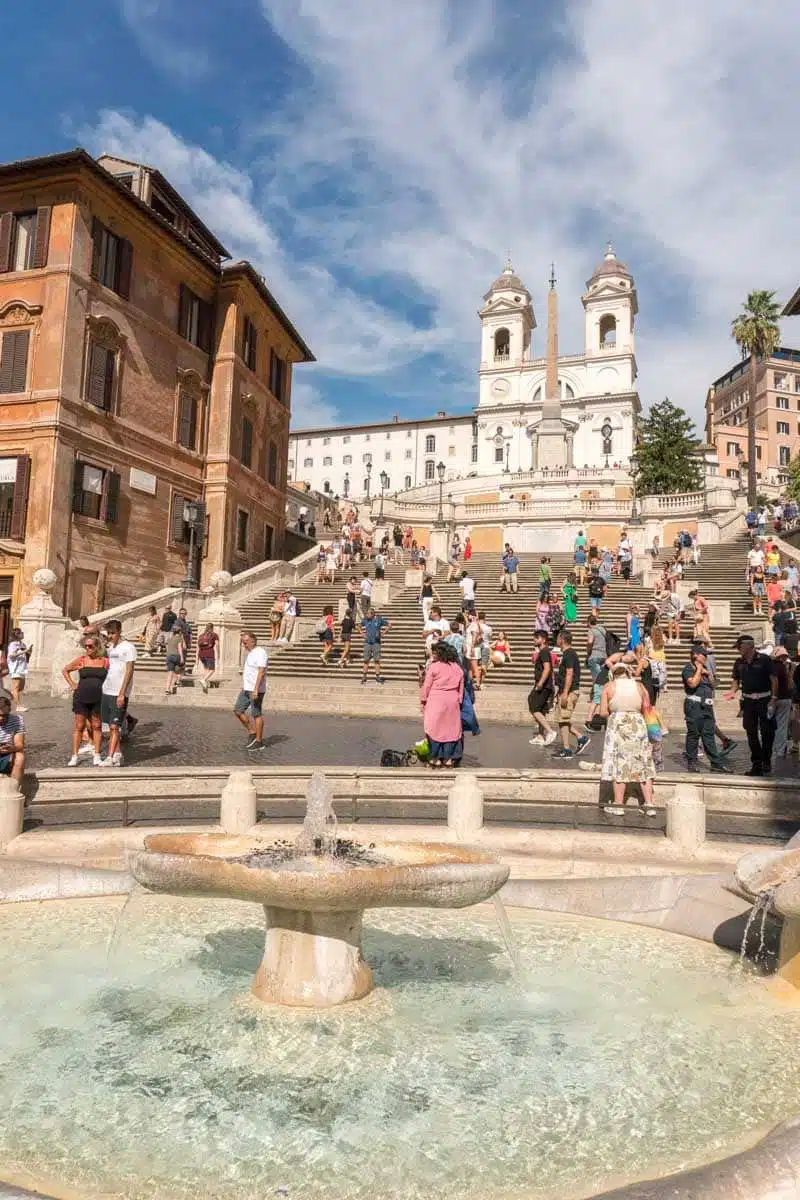
The Spanish Steps, named after the historical Spanish Embassy, are an iconic sight in Italy’s capital, along with the Piazza di Spagna below. The fountain in the square, sculpted by renowned artist Bernini and his father, is the piazza’s crowning glory.
Inaugurated in 1725, the 135 steps were built to connect the Trinità Dei Monti church with the piazza. I recommend indulging yourself at one of the tea rooms scattered about the square like Babingtons that serve high-quality tea (and high tea, too).
It’s quite the sight at twilight when the lights come on, but any time of day is a good time to visit this attraction.
Castel Sant’Angelo
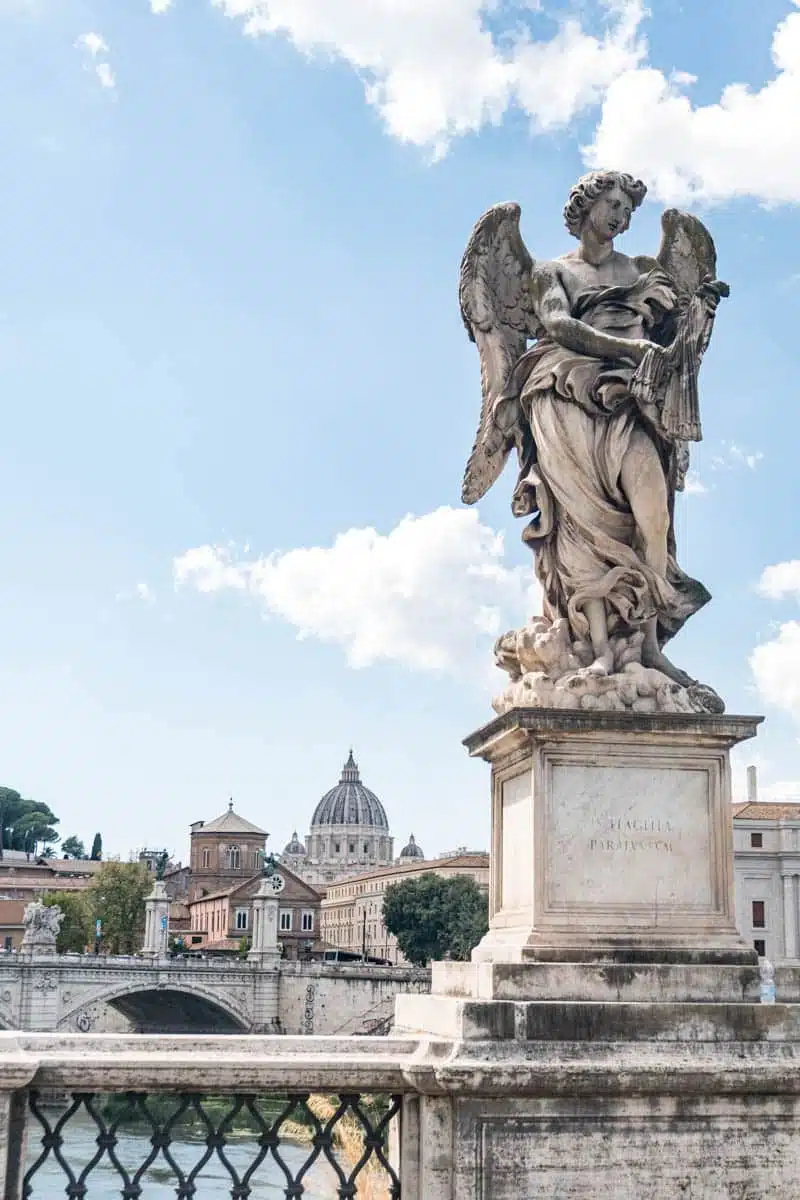
You want to talk about the landmarks of Rome? Let’s discuss Castel Sant’Angelo. Although already famous in its own right, the movie “Angels and Demons” just increased its popularity with Dan Brown fans and the general public.
You can access it via the Ponte Sant’Angelo, an exquisite bridge with ten angels sculpted by Bernini watching benevolently over you as you pass. The Castel is a mausoleum built in 135 AD by Emperor Hadrian and is on the right side of the Tiber river near the Vatican.
It has a fascinating history, serving as a military base in the Middle Ages and as a refuge for several Popes when invasions occurred.
The Appian Way
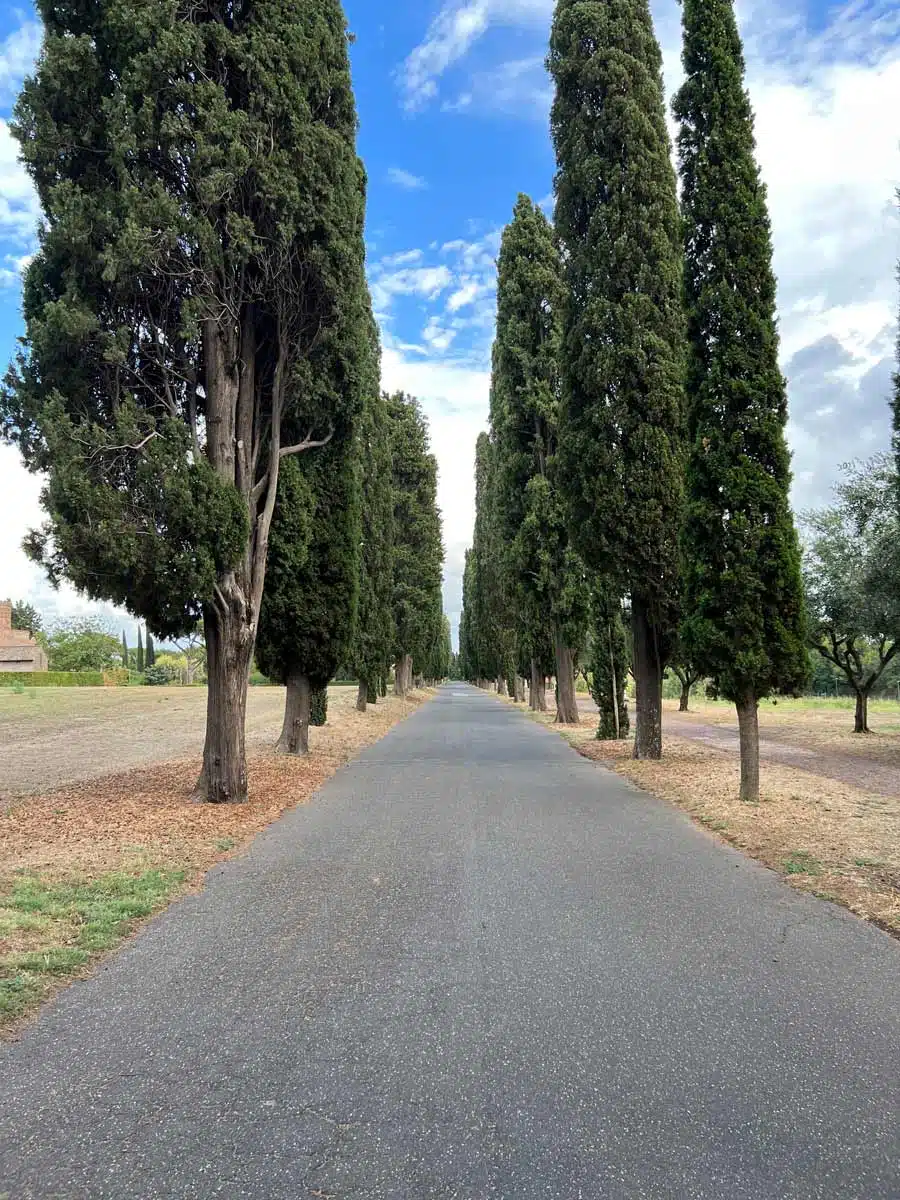
The Appian Way was one of the first roads the Romans ever built, strategically connecting Rome to Brindisi. It’s 2,000 years old and still going strong, though its stones have been trodden by merchants, soldiers, raiders, and travellers over the aeons.
It’s a peaceful place with nature dominating the scene, far from the bustle of modern chaotic Roman streets. There are multiple catacombs and sacred burial sites along the way, making it a pilgrimage for some and simply a moving experience for others.
As you traverse the ancient road, you’ll also see the Parco Degli Acquedotti (Oark of the Aqueducts) as a further reminder of Roman ingenuity and construction.
Top Tip: Book An Appian Way Guided Bike Tour
Crypt of the Capuchins

No, not the monkeys. The Capuchins are an order of Friars that separated from the Franciscans in 1525 to live more authentically in the ways of St. Francis.
Built between 1626 and 1631, the bones of thousands of Capuchin friars were excavated from the Via dei Lucchesi Monastery and used to decorate it artistically. The bones are in patterns and symbols across five separate chapels, making a slightly creepy but fascinating cultural instalment.
It might not be for the faint-hearted, but it’s worth the visit if you can handle a wall of skulls arranged like macabre macaroni-art staring down at you. Otherwise, stick to the Santa Maria della Concezione dei Cappuccini church above.
Villa Doria Pamphili
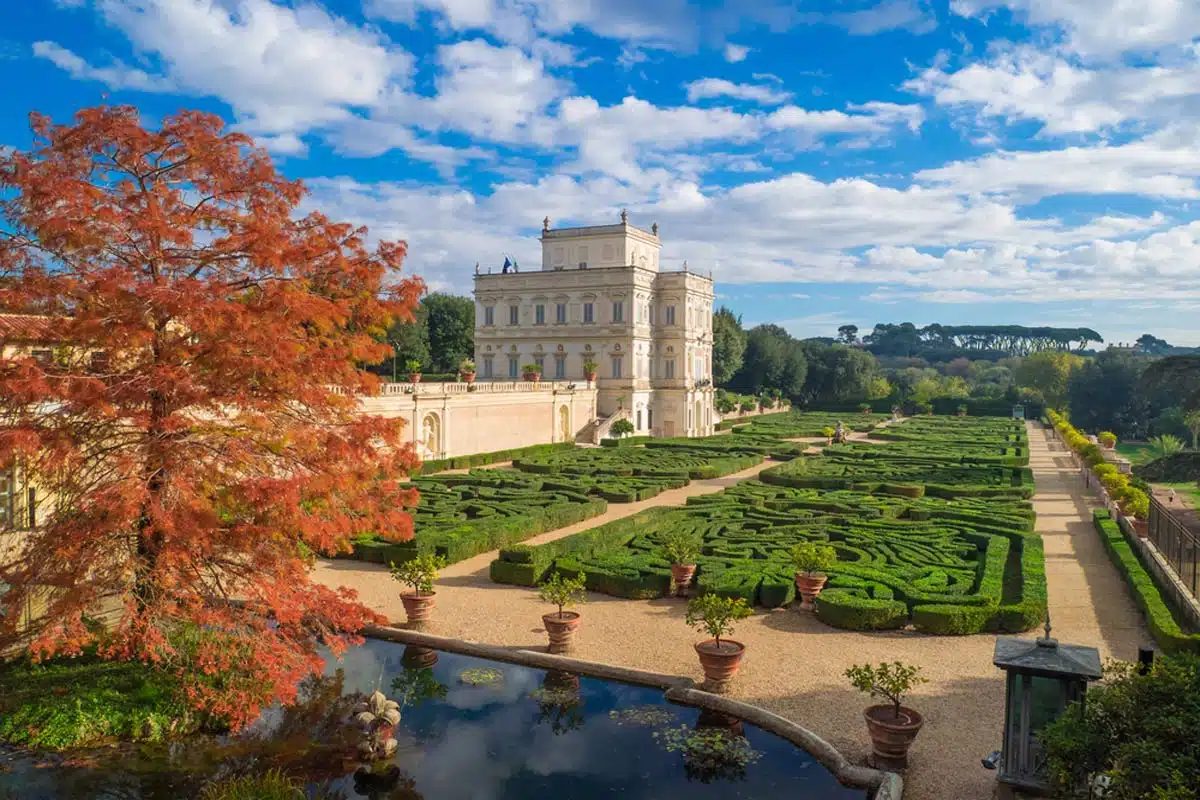
Home to the largest park in Rome (about 184 hectares), a watercourse crosses the gardens of Villa Doria Pamphili and ends in a splendid lake with an island sitting pretty in the middle.
The delicately-designed spiralled hedges are a delight, along with the 18th-century feel to its architecture. It’s also a fantastic location for birdwatching, thanks to the huge variety of biological specimens.
Once you’ve had your fill of the gardens, take a stroll through the Doria Pamphili Art Gallery and all its different facets. The Mirror Gallery, the Aldobrandini Gallery, the Pamphili Gallery, and the Doria Gallery are just waiting for your perusal.
Catacombs of San Sebastiano
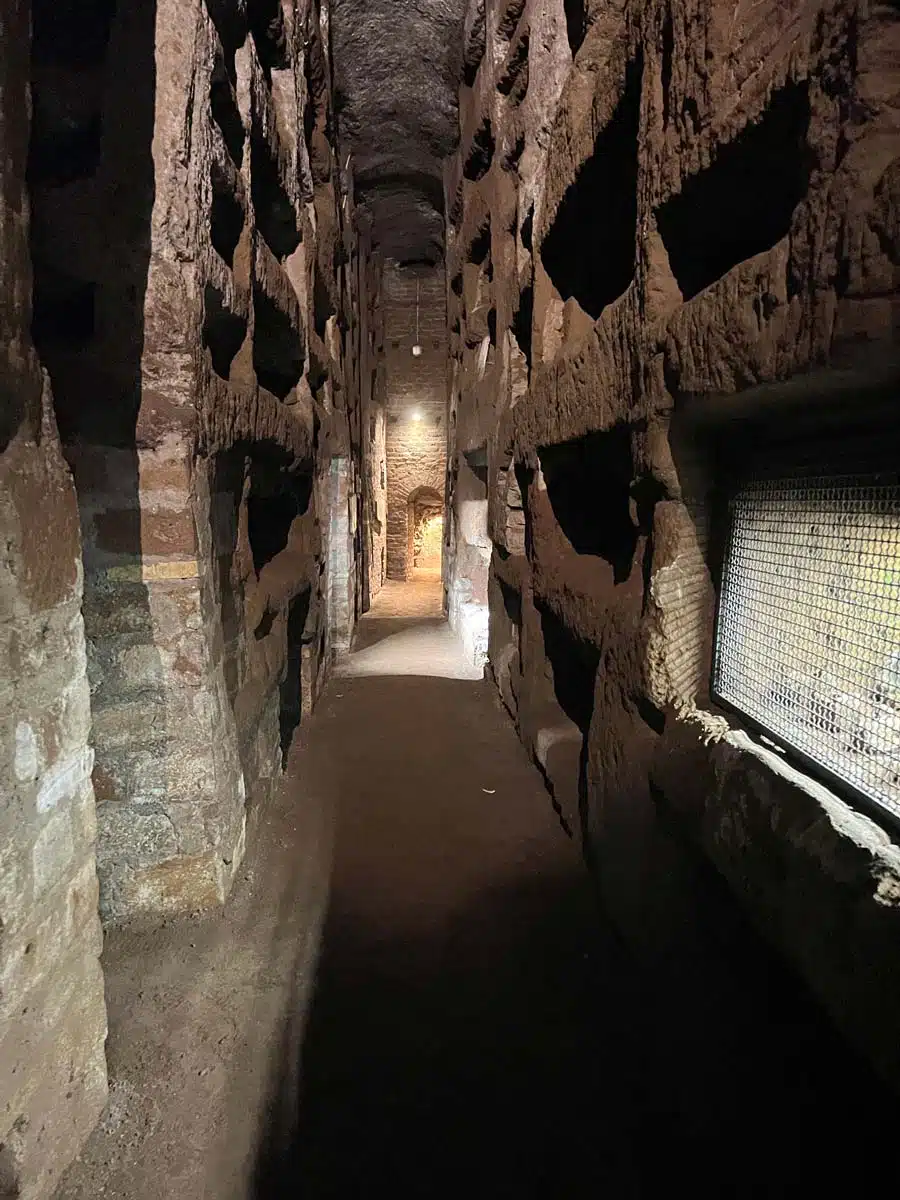
Paris’ offering might get all the fuss, but there are more than 60 catacombs in and around Rome alone.
That sounds like a lot, but the dead do outnumber the living by a large degree, after all. The Catacombs of San Sebastiano beneath the San Sebastiano Basilica at Via Appia Antica are one of the more fascinating examples of these resting places.
It was the first Christian burial site designated as a catacomb, and it has four levels of underground galleries dug out of the limestone subsoil. Heavy slabs of marble or terracotta tiles close off the loculi (cavities for the bodies). Descending into the tunnels might be a little eerie, but it’s a singular experience.
It’s even believed that St. Peter and St. Paul are interred here, hence why it became a place of pilgrimage.
One thing you might be wondering: does it smell in the catacombs? They have their own peculiar odour that is somewhat reminiscent of dust and old stone churches — and yes, it’s 100% because of what they contain. Gross.
Trajan’s Market
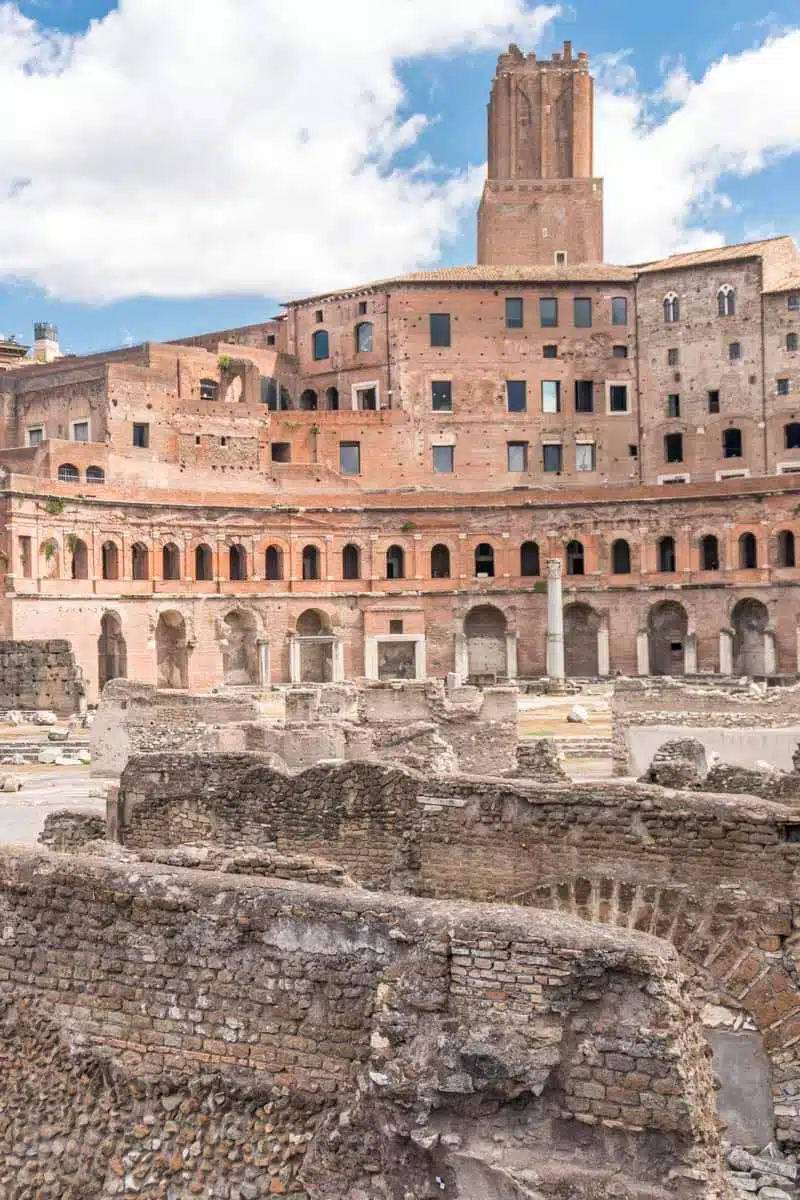
When discussing Rome sites, you can’t leave out Trajan’s Market. It’s an epic copper-coloured brick monument to ancient life, built between 100 AD – 110 AD by a great friend of Trajan, the Apollodorus of Damascus.
The lower part of this incredible feat of ancient architecture connects to the Forum, only a convenient stroll away. Feel like a Roman as you walk along its levels, looking wonderfully through the dozens of arched windows and doorways.
The Mouth of Truth
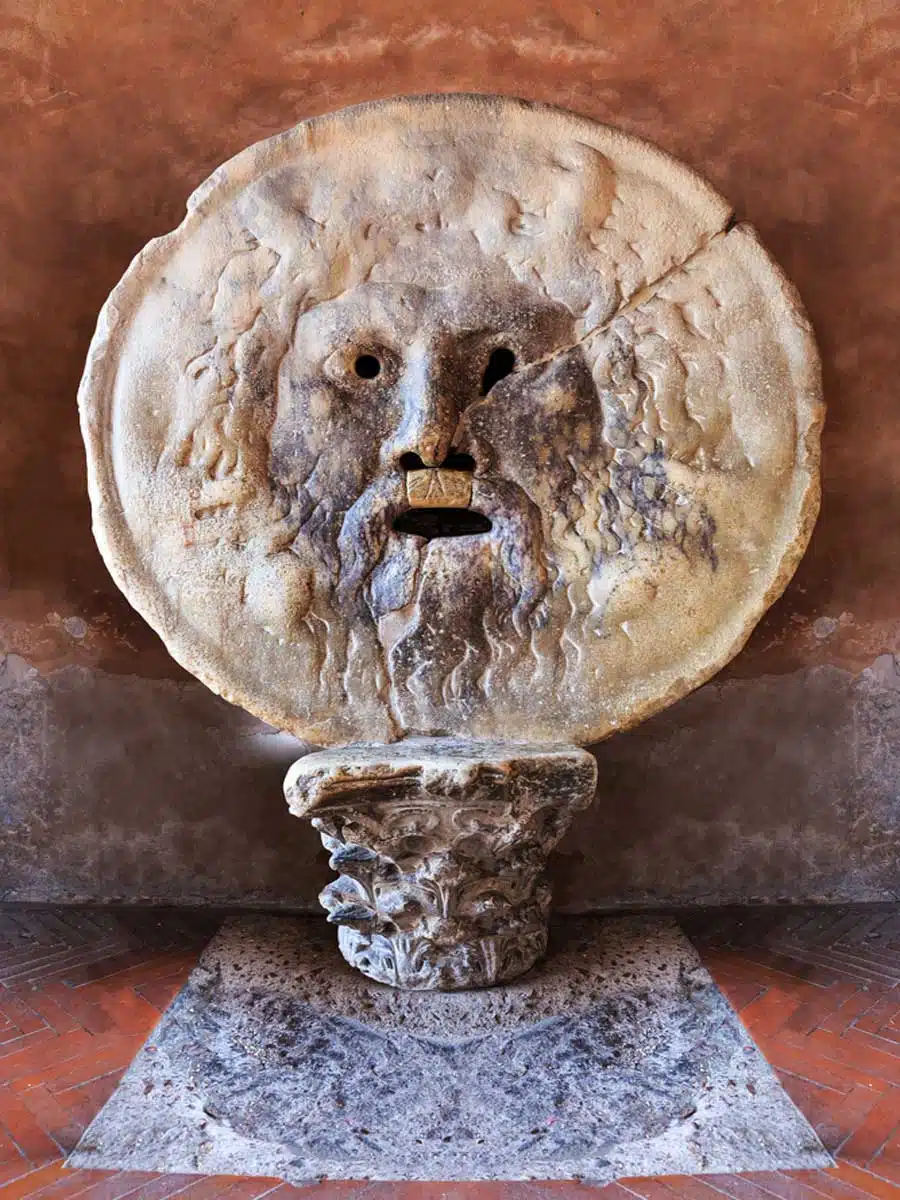
Is it a little creepy? A lot, actually. The Mouth of Truth is an ancient mask made of marble depicting a bearded man’s face with hollow eyes and a gaping mouth. Once upon a Roman time, it was a manhole, most of which show designs to resemble river deities swallowing the water.
This one was put on the wall of the Church of Santa Maria in Cosmedin, and believe it or not, the popular thing to do is stick your hand in the hole (eek). There’s a saying that if you put your hand in the mouth, you won’t be able to tell a lie — the ancient Romans believed if you did, you’d lose your hand.
You’re not likely to lose a hand these days, but you might find a creepy-crawly instead!
Tiber Island
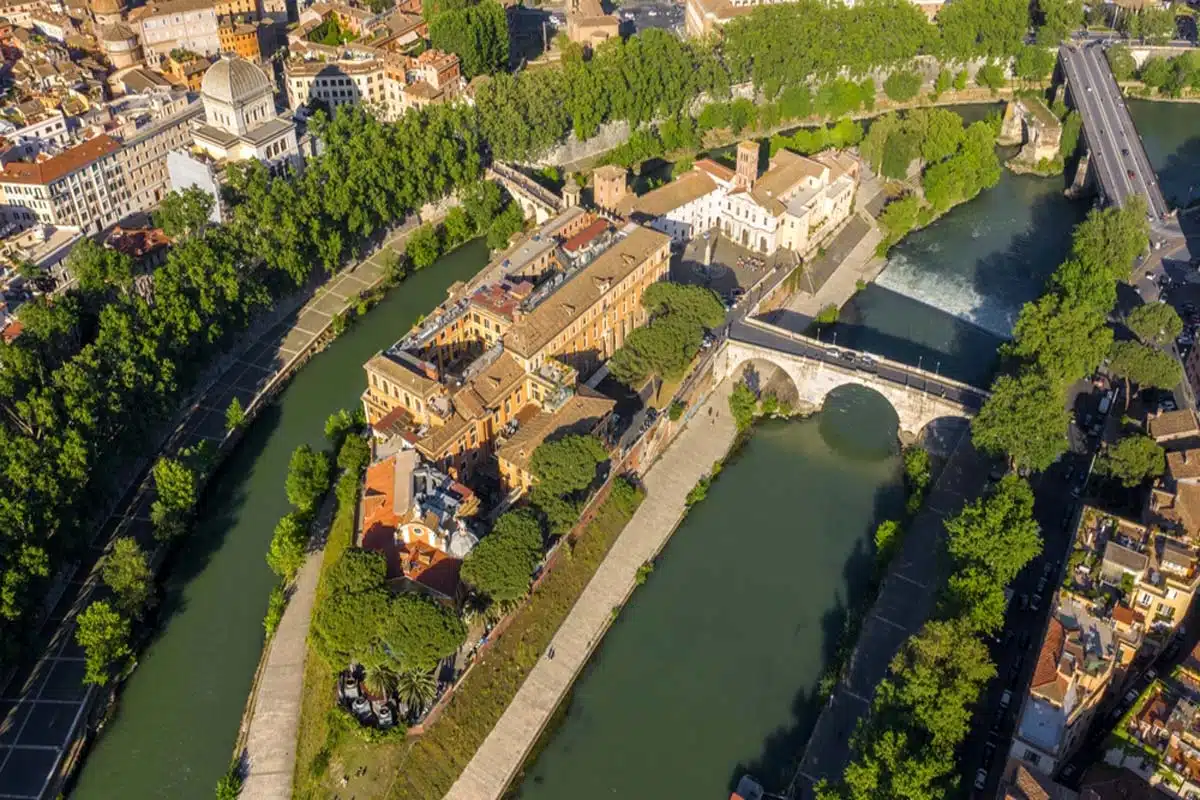
Also called Isola Tiberina by the locals, this sacred island is an accumulation of volcanic rocks and deposits in the Tiber River. It’s also the only island within the boundaries of Rome. The ancient Romans dedicated it to the Greek god of healing and medicine, Aesculapius.
It’s still considered a place of healing, with an active hospital run by the Hospitaller Order of St. John. While I hope you don’t need a doctor, it’s still a peaceful and relaxing landmark to visit with great views.
Practical Tips for Visiting Rome’s Landmarks
Book tickets in advance to avoid disappointment. These attractions are incredibly popular, especially during the summer, so make sure you get your ticket before arriving at your destination. I love using GetYourGuide.com, but you can also book directly from the attraction’s website.
It isn’t possible to buy tickets on the day at certain landmarks. For example, the Pantheon doesn’t allow it on weekends. So check the rules for the attractions you plan on visiting and buy in advance if possible.
Bring a cover up, especially in the hot summer when you’ll probably be dressing cooler. It’s not to keep you warm but to allow you entry into the churches that don’t allow bare legs or shoulders. If you forget, though, don’t stress — vendors often sell coverups at an inflated price just outside the most popular attractions.
Take a water bottle and a pair of sunglasses to keep the heat at bay in summer. Regardless of the season, wear comfy shoes to help you navigate the cobbled and uneven walkways without twisting your ankle.
Many of these places get crowded with bustling tourists competing for the ultimate Instagram holiday pic, so go early to the biggest attractions. Save the less popular ones for later in the day.
Rome Landmarks: Map
Love This? Save and Share on Pinterest
